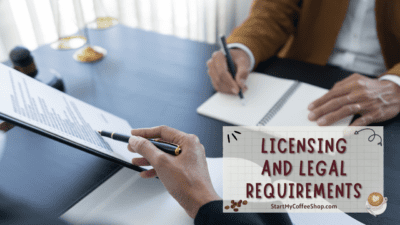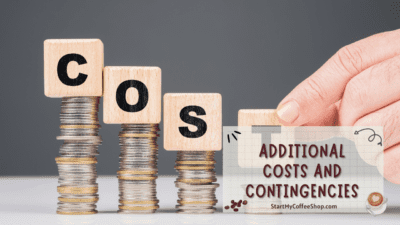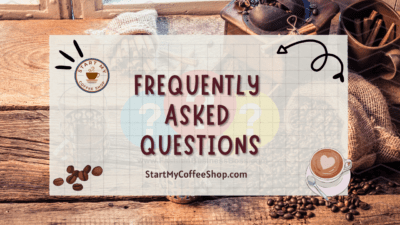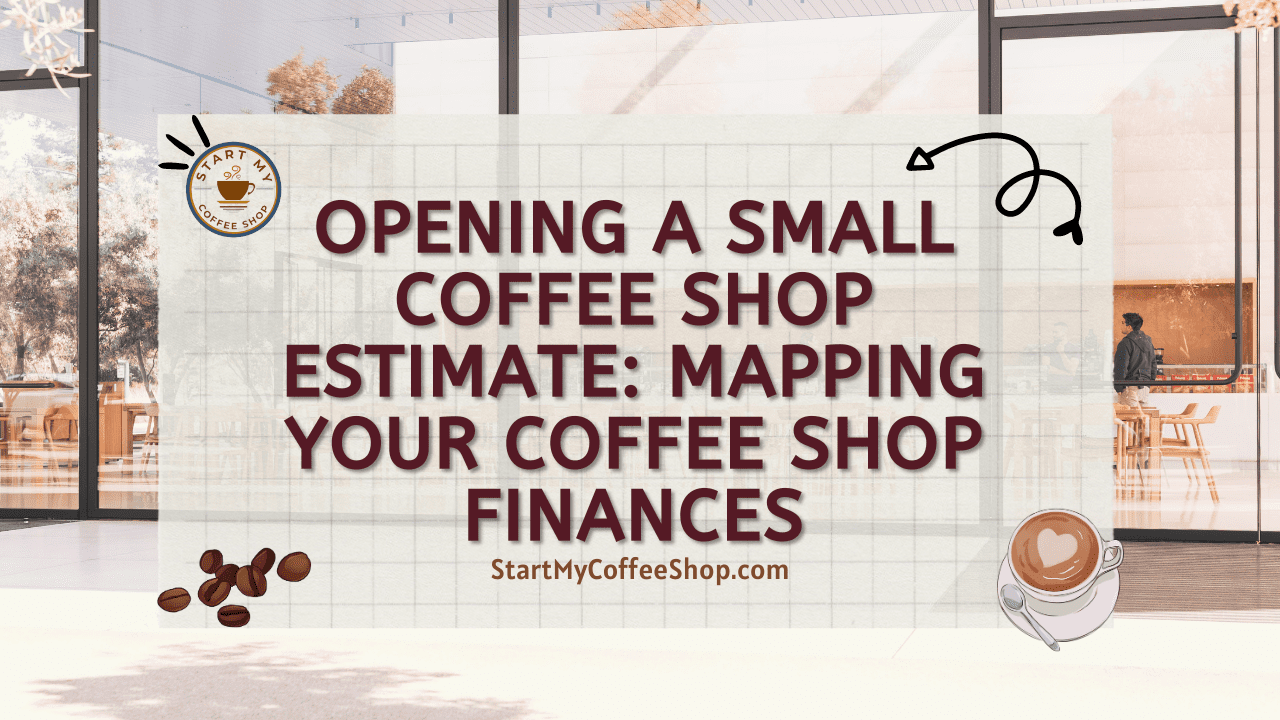Opening a small coffee shop can be an exciting venture, but it’s important to have a clear understanding of the estimated costs involved. From equipment and space to licensing, staffing, and initial inventory, these expenses can significantly impact your budget.
The cost of opening a small coffee shop can vary depending on various factors such as equipment, space lease or purchase, licensing, staffing, initial inventory, and other expenses. On average, you can expect to allocate anywhere between $80,000 to $300,000 or more for the initial setup and operational costs.
In this article, I will delve into each aspect and provide insights into the estimated costs associated with opening a small coffee shop.
1. Equipment Costs
When embarking on the journey of opening a coffee shop, one of the significant expenses you’ll encounter is the cost of equipment. A well-equipped coffee shop requires essential tools such as espresso machines, grinders, blenders, refrigerators, coffee brewers, and various other necessary appliances. The prices of these equipment items can vary significantly based on factors like brand reputation, quality, and capacity.
To ensure that you make the most of your budget, diligent research, and supplier comparison are crucial. By exploring different options, you can identify the most suitable equipment that meets your needs and aligns with your financial capabilities. Consider factors such as durability, warranty, customer reviews, and maintenance requirements when evaluating different brands and models.
On average, it is reasonable to allocate approximately $15,000 to $40,000 for equipment purchases when opening a small coffee shop. This estimate takes into account the need for reliable and efficient equipment without overspending on unnecessary features or extravagant brands. However, it is essential to note that the actual costs may vary depending on your specific requirements and preferences.
Remember that investing in high-quality equipment can significantly impact the overall efficiency and productivity of your coffee shop. Well-maintained machines ensure consistency in beverage preparation, allowing you to deliver an exceptional experience to your customers. Additionally, equipment with advanced features may enhance operational processes and contribute to better customer service.
While determining your equipment budget, it’s advisable to prioritize essential items and consider future scalability. Assess the specific needs of your coffee shop, such as the volume of daily orders and the range of beverages you plan to offer. This evaluation will help you decide the appropriate capacity and features required for each equipment category. Additionally, factor in the costs of small wares and utensils such as coffee tampers, scales, knock boxes, and pitchers, which are essential for smooth operations.
2. Space Lease or Purchase
Finding the right location for your coffee shop is a vital decision that can significantly impact its performance. The cost of securing a suitable space will depend on various factors, including size, location, and the level of demand in the area.
Leasing a space is a popular option for small coffee shops as it offers flexibility without requiring a substantial upfront investment. However, lease prices can vary significantly based on the region and neighborhood. In less competitive areas, lease costs may range from $1,500 to $3,000 per month for a moderate-sized space. However, in prime locations or bustling urban areas, lease prices can escalate significantly, reaching $5,000 to $8,000 per month or more.
On the other hand, purchasing a property provides long-term stability and the potential for future returns on investment. However, it requires a more substantial upfront investment. The prices of coffee shop properties can vary based on the location and real estate market conditions. In general, purchasing a property for a small coffee shop can range from $200,000 to $500,000 or even higher, depending on the area’s desirability and property size.
When considering a location, it’s crucial to assess factors such as foot traffic, accessibility, parking availability, and proximity to other businesses. A prime location with high visibility and easy access can contribute to attracting more customers and generating increased revenue. However, it’s essential to balance the benefits of a prime location with the associated higher costs.
Before making a decision, it’s advisable to thoroughly research the local market, consult with real estate professionals, and consider factors such as lease terms, property conditions, and zoning regulations. Evaluating the potential return on investment and your long-term goals will help guide your decision-making process.
Ultimately, choosing the right location for your coffee shop involves finding a balance between affordability, visibility, and the target market’s preferences. By carefully considering the costs and benefits of leasing or purchasing a space, you can make an informed decision that aligns with your budget and business objectives.
3. Licensing and Legal Requirements
Operating a coffee shop legally requires obtaining various licenses and permits. These include a business license, health department permits, food handling certifications, and, in some cases, liquor licenses. Ensuring compliance with these legal requirements is essential to run your coffee shop smoothly and avoid any penalties or legal issues. The costs associated with obtaining licenses will vary depending on your location and the specific requirements set by your local government.
The first step is to research the licensing and permit requirements in your area. Contact your local city or county government offices to understand the necessary licenses and permits needed to operate a coffee shop. They will provide you with information on the specific documents, fees, and application processes involved.

One of the primary licenses you will need is a business license, also known as a general operating license. This license allows you to legally operate a business in your jurisdiction. The cost of a business license can vary depending on the location and the size of your coffee shop. It’s advisable to budget around $100 to $500 for this license.
Additionally, health department permits are crucial to ensure that your coffee shop meets the necessary health and sanitation standards. These permits involve inspections and compliance with regulations related to food handling, storage, and cleanliness. The fees associated with health department permits can range from $100 to $500, depending on your location and the size of your coffee shop.
Food handling certifications are often required for businesses that prepare and serve food and beverages. These certifications demonstrate that your staff has received proper training in food safety and handling procedures. The costs of food handling certifications can vary, ranging from $100 to $300 per staff member. It’s important to factor in the number of employees who will require certification when estimating this cost.
If you plan to serve alcoholic beverages in your coffee shop, you may need to obtain a liquor license. The requirements and costs associated with liquor licenses vary significantly depending on your jurisdiction. It’s essential to research the specific regulations in your area and budget accordingly. Liquor licenses can be quite expensive, ranging from a few hundred dollars to several thousand dollars annually.
In addition to the licenses mentioned above, there may be other permits or certifications required based on your specific circumstances. For example, if you plan to have outdoor seating or play music, you may need additional permits or permissions.
Budgeting around $500 to $2,000 for licensing and legal compliance is a reasonable estimate, but keep in mind that these costs can vary depending on factors such as location, business size, and specific requirements. It’s essential to consult with your local government offices and seek professional advice to ensure that you have a comprehensive understanding of the licensing process and associated costs.
Read more about Cost to Open Scooter’s Coffee Shop: Mapping Out the Financial Landscape
4. Staffing
The improvement of your coffee shop hinges on the competence and friendliness of your staff. Allocating a budget for staffing expenses is essential, encompassing wages, training, and potential benefits. The costs associated with staffing will depend on factors such as the number of employees, their specific roles, and the prevailing labor market rates in your area.
In a typical coffee shop, various positions need to be filled, including baristas, cashiers, kitchen staff, and managers. Baristas are the heart and soul of your coffee shop, responsible for crafting and serving high-quality beverages to your customers. Cashiers handle transactions and ensure smooth operations at the point of sale. Kitchen staff contributes to food preparation, if applicable, and managers oversee the overall operations, including scheduling, inventory management, and customer service.
When budgeting for staff salaries, it’s important to consider the size and location of your coffee shop. The cost of living and prevailing wage rates in your area will influence the appropriate compensation levels. Entry-level positions, such as cashiers and kitchen staff, may have lower salary ranges, typically starting around $25,000 per year. Experienced and skilled baristas or managers may command higher salaries, ranging from $30,000 to $60,000 per year, depending on their qualifications and responsibilities.
In metropolitan areas or locations with higher living costs, salaries may be on the higher end of the range. Additionally, offering employee benefits such as health insurance, retirement plans, or paid time off can enhance job satisfaction and attract and retain qualified staff. These benefits should be factored into your staffing budget, as they contribute to employee retention and overall operational stability.
Alongside salaries and benefits, investing in staff training is crucial to ensure consistent quality and exceptional customer service. Training programs, whether conducted in-house or outsourced, incur costs that should be accounted for in your overall staffing budget.
It is important to regularly review and adjust your staffing budget as your business grows and evolves. Factors such as changes in labor market rates, business expansion, or the introduction of new roles should be considered to ensure your budget remains accurate and aligned with industry standards.
5. Initial Inventory
When it comes to operating a coffee shop, stocking up on high-quality ingredients is of utmost importance. From coffee beans and teas to syrups and pastries, your inventory plays a crucial role in shaping the flavors and variety you offer to your customers. Estimating the initial inventory costs can be a challenging task, as it depends on several factors such as your menu offerings, anticipated customer demand, and the prices set by your suppliers.
The first step in estimating your inventory costs is to carefully plan your menu. Determine the types of coffee drinks, teas, and other beverages you plan to offer. Consider whether you will serve specialty drinks, such as lattes, cappuccinos, or cold brews, as these may require specific ingredients and flavorings. Assess the potential demand for each item by conducting market research or analyzing the preferences of your target audience.
Once you have a clear understanding of your menu, you can start creating a comprehensive list of the ingredients and supplies required to bring your offerings to life. This includes coffee beans, tea leaves, milk, sweeteners, syrups, flavorings, pastries, and any other necessary items. Take into account the quantities needed to meet daily demand and establish a reasonable stock level.
To estimate the costs associated with your initial inventory, you’ll need to contact potential suppliers and gather price quotes for each item. Supplier prices can vary depending on factors such as quality, brand reputation, and bulk order discounts. Comparing prices from different suppliers will help you identify the most cost-effective options without compromising on the quality of your ingredients.
On average, a coffee shop can expect to spend between $3,000 and $8,000 on initial inventory. However, it’s important to note that this range is highly variable and can be influenced by factors such as the size of your coffee shop, the scope of your menu, and the anticipated customer traffic during the opening period. It’s advisable to err on the side of caution and ensure that you have enough inventory to meet the initial demand without the risk of running out of essential items.
In addition to the actual ingredients, don’t forget to include other necessary supplies in your inventory estimate. This may include paper cups, lids, napkins, stirrers, coffee filters, cleaning supplies, and any other items required for smooth daily operations.
Managing your inventory effectively is crucial to avoid waste, spoilage, or shortages. Implementing inventory management systems and practices can help you track usage, monitor expiration dates, and maintain optimal stock levels. Regularly reviewing your inventory levels and adjusting your orders based on customer preferences and seasonal demand will help you strike a balance between meeting customer needs and minimizing unnecessary costs.
Lastly, establishing relationships with reliable suppliers is vital for maintaining a consistent supply of high-quality ingredients. Consider factors such as delivery schedules, payment terms, and the ability to accommodate future growth when choosing your suppliers.
By estimating your initial inventory costs accurately and sourcing quality ingredients at competitive prices, you can ensure that your coffee shop is well-equipped to deliver exceptional beverages and pastries to your customers. A well-stocked inventory sets the foundation for a great coffee shop by providing the ingredients necessary to create memorable experiences and build a loyal customer base.
6. Additional Costs and Contingencies
Opening a small coffee shop involves more than just the obvious expenses. Various miscellaneous costs should be considered to ensure the smooth operation and progress of your business. These additional expenses can include marketing and advertising, interior design and decor, point-of-sale (POS) systems, insurance, utilities, and ongoing maintenance. Setting aside a contingency budget of 10-15% of your total estimated costs is advisable to account for unforeseen expenses and price fluctuations.

One important aspect to consider is marketing and advertising. Promoting your coffee shop and attracting customers requires a well-planned marketing strategy. This can include creating a website, social media presence, and online advertising. You may also consider traditional marketing methods such as print materials, signage, and local promotions. Budgeting for marketing expenses can help you effectively reach your target audience and establish a strong brand presence in your community.
Investing in the interior design and decor of your coffee shop is crucial to create an inviting and comfortable atmosphere for your customers. This can include furniture, lighting, artwork, signage, and other decorative elements that align with your brand image. Depending on your desired aesthetic and the size of your space, interior design costs can vary. It’s essential to strike a balance between creating an appealing ambiance and managing costs effectively.
Implementing a reliable and efficient POS system is essential for streamlined operations and accurate transaction management. POS systems help you process payments, track inventory, and manage customer orders. The costs associated with a POS system can vary depending on the features and capabilities you require. It’s important to research different options and choose a system that fits your specific needs and budget.
Insurance is a crucial aspect of protecting your coffee shop from unexpected events or liabilities. Business insurance policies can cover areas such as general liability, property damage, workers’ compensation, and product liability. Insurance costs will depend on various factors, including the size of your coffee shop, location, and coverage limits. It’s important to consult with an insurance professional to determine the appropriate coverage and budget for insurance premiums.
Utilities such as electricity, water, and gas are ongoing expenses that need to be factored into your budget. These costs can vary depending on the size of your space, equipment usage, and local utility rates. It’s advisable to research average utility costs in your area and estimate monthly expenses to ensure accurate financial planning.
Ongoing maintenance is another consideration that should not be overlooked. Equipment repairs, cleaning supplies, pest control, and general maintenance costs can arise unexpectedly. Allocating a portion of your budget for ongoing maintenance ensures that you can address any issues promptly and maintain a safe and functional environment for your customers and staff.
To account for unexpected expenses and price fluctuations, setting aside a contingency budget is crucial. A contingency budget of 10-15% of your total estimated costs provides a financial buffer and safeguards against unforeseen circumstances. It allows you to adapt and address any unexpected expenses that may arise during the startup phase or subsequent operations.
By considering these miscellaneous costs and setting aside a contingency budget, you can ensure that you have the necessary resources to handle unforeseen circumstances and maintain the smooth operation of your coffee shop. Proper planning and budgeting will contribute to the long-term growth and sustainability of your business.
Read more about Cost to Run a Small Coffee Shop: Setting the Budget for Your Coffee Shop
Summary
Opening a small coffee shop requires careful financial planning. By estimating the costs associated with equipment, space lease or purchase, licensing, staffing, initial inventory, and additional expenses, you can create a realistic budget for your coffee shop venture. It’s important to conduct thorough research, obtain multiple quotes, and consult with industry professionals to ensure accurate cost estimations. By doing so, you can set yourself up for improvement and navigate the financial aspects of opening a small coffee shop with confidence.
Frequently Asked Questions

Q: What are the essential equipment needed for a coffee shop, and how much do they cost?
A: Essential equipment for a coffee shop typically includes espresso machines, grinders, blenders, refrigerators, coffee brewers, and other appliances. On average, budgeting around $15,000 to $40,000 for equipment purchases is a reasonable estimate.
Q: Should I lease or purchase a space for my coffee shop?
A: Leasing provides flexibility but incurs monthly rental expenses, which can range from $1,500 to $8,000 or more. Purchasing a property requires a larger upfront investment, with prices ranging from $200,000 to $500,000 or higher.
Q: What licenses and permits are required to open a coffee shop?
A: Opening a coffee shop involves obtaining various licenses and permits, including a business license, health department permits, food handling certifications, and possibly liquor licenses depending on your offerings. Budgeting around $500 to $2,000 for licensing and legal compliance is a reasonable estimate.
To learn more on how to start your own coffee shop checkout my startup documents here
Please note: This blog post is for educational purposes only and does not constitute legal advice. Please consult a legal expert to address your specific needs.

Hi! I’m Shawn Chun
My adventure in coffee began when I first launched my first coffee shop back in the early 2000s. I had to figure out so many things on my own and to make it worse within 2 years of opening two large corporate coffee chains moved in just blocks away from me!
As I saw smaller and even some larger coffee shops in the neighborhood slowly lose customers to these giant coffee chains and slowly close up shop, I knew that I had to start getting creative…or go out of business.
I (like you may be) knew the coffee industry well. I could make the best latte art around and the foam on my caps was the fluffiest you have ever seen. I even had the best state-of-the-art 2 group digital Nuova Simonelli machine money could buy. But I knew that these things alone would not be enough to lure customers away from the name brand established coffee shops.
Eventually, through lots of trial and error as well as perseverance and creativity I did find a way to not only survive but also thrive in the coffee/espresso industry even while those corporate coffee chains stayed put. During those years I learned to adapt and always faced new challenges. It was not always easy, however, in the end, I was the sole survivor independent coffee shop within a 10-mile radius of my location. Just two corporate coffee chains and I were left after that year. All told the corporate coffee chains took down over 15 small independent coffee shops and kiosks and I was the last one standing and thriving.
Along the years I meet others with the same passion for coffee and I quickly learned that it is not only “how good a barista is” that makes a coffee shop successful, but the business side of coffee as well.
Hence why I started this website you are on now. To provide the tools and resources for up and coming coffee shop owners to gain that vital insight and knowledge on how to start a coffee shop successfully.
Stick around, browse through my helpful blog and resources and enjoy your stay! With lots of LATTE LOVE!
Shawn







